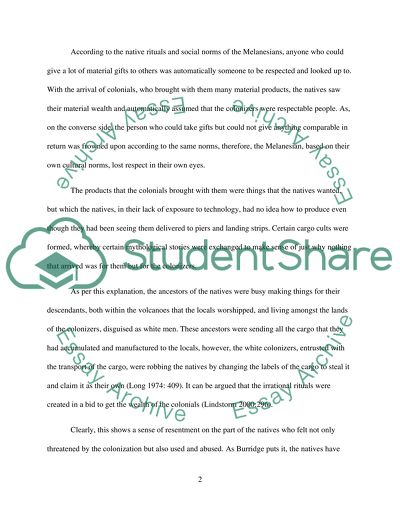Cite this document
(“Cargo Cult Essay Example | Topics and Well Written Essays - 1250 words”, n.d.)
Retrieved from https://studentshare.org/anthropology/1494834-cargo-cult
Retrieved from https://studentshare.org/anthropology/1494834-cargo-cult
(Cargo Cult Essay Example | Topics and Well Written Essays - 1250 Words)
https://studentshare.org/anthropology/1494834-cargo-cult.
https://studentshare.org/anthropology/1494834-cargo-cult.
“Cargo Cult Essay Example | Topics and Well Written Essays - 1250 Words”, n.d. https://studentshare.org/anthropology/1494834-cargo-cult.


